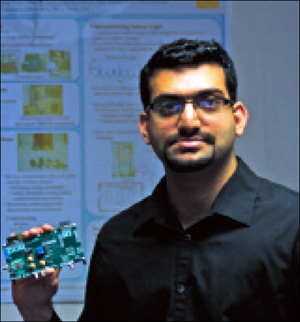Apr 03, 2015The electronics industry has envisioned printing complex circuits on ordinary materials since the late 1970s, when three University of Pennsylvania research scientists—Alan J. Heeger, Alan G. MacDiarmid and Hideki Shirakawa—developed the world's first conductive polymers (an achievement for which they were later awarded a Nobel Prize). But printing integrated circuits, including those for the chip used in radio frequency identification transponders, has turned out to be more challenging than many envisioned.
A recent breakthrough by a research group at Nanyang Technological University, in Singapore, could change that. One of the first applications of its technology could be the mass production of printed RFID tags, says Joseph Chang, an associate professor who's leading the research team.

Most ICs are made by a subtractive process—etching away materials then adding others to create circuits, Chang explains. The process is expensive, with silicon wafers undergoing many steps to produce chips, and the machines to execute these processes are very expensive (new silicon foundries cost billions to build).
The researchers developed an additive process that uses the equipment and silk screens used to print multicolored T-shirts. "Our fully additive printing process is the only printing process that is able to print complete complex circuits and systems," Chang says. "Also, our process features the highest speed. It is 3.5 times faster than other printed circuits and is comparable to significantly more costly subtractive processes."
RFID chips are simpler than many other types of ICs, so they are an attractive first product for printed circuits. Chang's team has printed all the building blocks of an RFID tag. "All the blocks are fully functional," he says. "We are now in the process of printing and testing a complete RFID tag."
One downside of printing chips is the circuits are much larger than those etched in silicon (the RFID tag the team is working on is approximately 10 centimeters by 10 centimters.
But the goal is not to replace conventional microchips. "Instead," he says, "printed electronics should be viewed as complementary to silicon and applied where its advantages, such as flexible substrate, large format, cheap and quick printing, and sensor technologies, can be exploited."
There are many applications for which the size of an RFID tag doesn't matter, but the cost is crucial. If a low-cost tag could be printed inside a $3 box of cereal, for example, that item could be tracked effectively with RFID, but a 10-cent conventional tag would likely be too expensive to make RFID-tracking feasible.
Now, the team is working on developing an industrial grade printing system so printed ICs can be mass-produced. Chang expects to begin commercializing the technology in a year or two. Perhaps one of the first applications will be printing tags right onto T-shirts.
